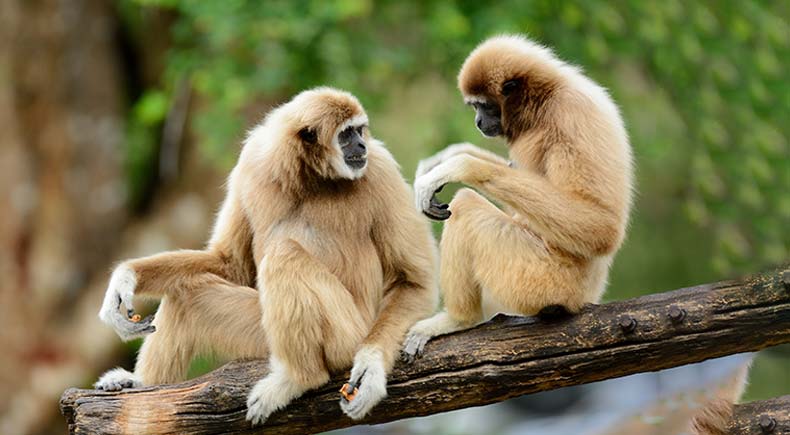10 Animals That Say 'Till Death Do Us Part'
Much of the animal kingdom couldn't care less about monogamy, but here are 10 exceptions. They usually stick with the same mate until one of them dies, often creating stable family groups to raise their children. How many can you name?

STORY AT-A-GLANCE
- Many people don’t realize there are lots of members of the animal kingdom that mate for life
- In some cases of monogamous mates — for example, beavers — both parents care for their offspring
- When one partner in a monogamous pair dies, most surviving partners go on to find a new mate before the next breeding season
Editor's Note: This article is a reprint. It was originally published August 7, 2015.
Did you know there are members of the animal kingdom (other than humans) that mate for life? In some cases of monogamous mates – for example, beavers – both parents care for their offspring.
When one partner in a monogamous pair dies, most surviving partners go on to find a new mate before the next breeding season.
10 Animals That Mate for Life
- Beavers — Adult beavers can weigh 40 pounds or more, and they mate for life during their third year. Their babies are called kits, and typically 1 to 4 are born in the spring. Both parents care for their kits, who stay with them for about two years. The yearlings typically help care for the next litter.
A beaver colony can consist of six or more individuals, including parents, yearlings, and kits.
Source: Beavers: Wetlands and Wildlife - Gibbons — Gibbons are the nearest relatives to humans that mate for life. They live in small, stable family groups with a monogamous mated pair and offspring under the age of 7. Gibbon families are territorial and defend their territory with morning songs sung by the breeding pair.
Gibbons reach sexual maturity between 6 and 8 years of age. Females give birth to one baby at a time, and mating pairs produce an average of 5 to 6 offspring over their reproductive lifetimes.
Sources: EnchantedLearning.com
University of Wisconsin - Madison - Wolves — Wolves live in packs that are typically family groups including a male and female breeding pair and their offspring of varying ages. Only the breeding pair mates, and has one litter a year.
Wolves reach sexual maturity between 2 and 3 years of age, and once the youngsters are ready to mate, most leave their birth pack to start their own pack or join an existing pack.
Source: Western Wildlife Outreach - French Angelfish — French angelfish mate for life and fight to defend their territory against other angelfish pairs.
Source: IUCN - Shingleback Skinks — The shingleback skink is a heavily armored, blue-tongued lizard that inhabits western and southern Australia. It is mostly monogamous and has known to pair with the same mate for up to 20 years.
Shingleback lizards live alone for most of the year, but get together with their partners during breeding season in September and November. In western New South Wales, shinglebacks are often seen crossing roads in pairs, the male following the female.
Sources: EOL.org
Australian Museum - Swans — The Mute Swan typically mates for life, though once in awhile, mates change partners, and swans will find another mate if their partner dies.
If a male swan loses his mate and finds a new, younger female, she joins him on his territory. However, if the male mates with an older female, they join up on her territory. If a female swan loses her mate, she typically finds a new, younger mate rather quickly.
Source: All About Birds - Albatrosses — Albatrosses mate for life and if one partner dies, the surviving bird may search for years for a new mate. The albatross can live to be 50 years old, however, today they are severely threatened by longline fishing.
Albatrosses spend time on the ground only to breed, typically in large colonies on remote islands. Mating pairs produce just one egg and take turns caring for it. Young albatrosses learn to fly at from 3 to 10 months, depending on the species. Once aloft, it will be 5 to 10 years before they reach sexual maturity and return to the ground to breed.
Source: National Geographic - Penguins — Penguins are primarily monogamous, however, some species like the Emperor Penguin are serially monogamous, meaning they partner with one mate for a season rather than for life.
Monogamous species include African and Magellanic, Gentoo, and Royal penguins. Both male and female penguins prepare the next and take care of the chicks.
Source: Penguins-World - Barn Owls — Barn owls are usually monogamous and mate for life. After the pair forms, the male keeps the female supplied with food beginning about a month before she starts laying eggs.
Female barn owls build simple nests of their own regurgitated pellets. Unlike most birds, owls may use their nest sites for roosting throughout the year and nest sites are often reused from year to year, often by different owls.
Source: All About Birds - Bald Eagles — Though bald eagles spend winters and migrations alone, they remain monogamous throughout life with their chosen mate. Bald eagle pairs build platform nests on the tops of trees and produce offspring each year. If one of the pair dies, the surviving eagle will find a new mate for the next breeding season.
Bald eagles typically lay 2 or 3 eggs, which are incubated for about 35 days.
Source: National Wildlife Federation











